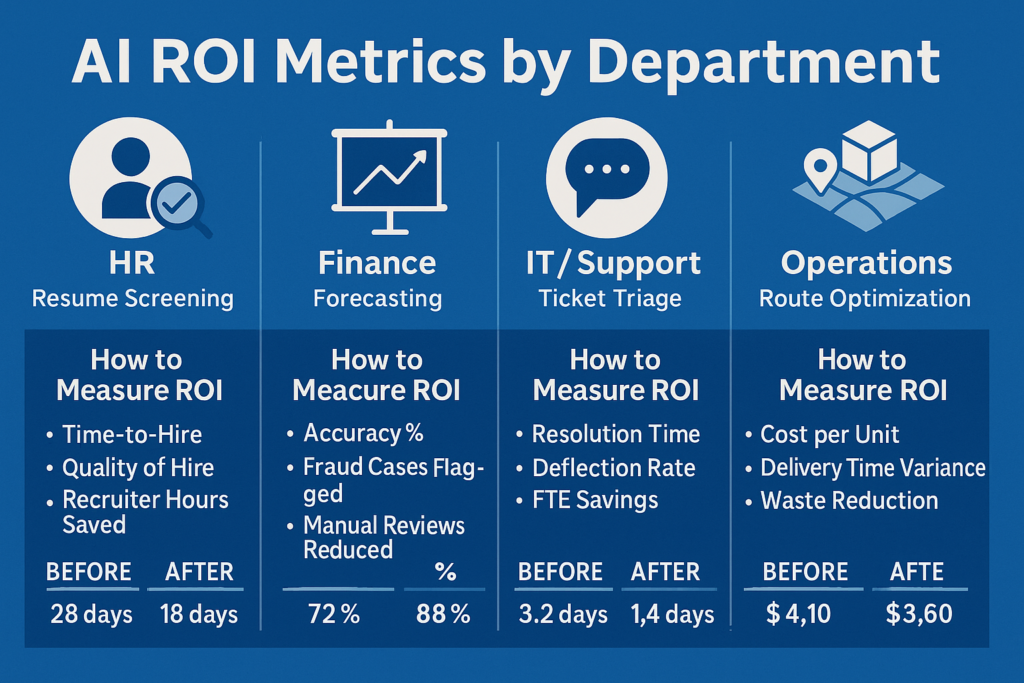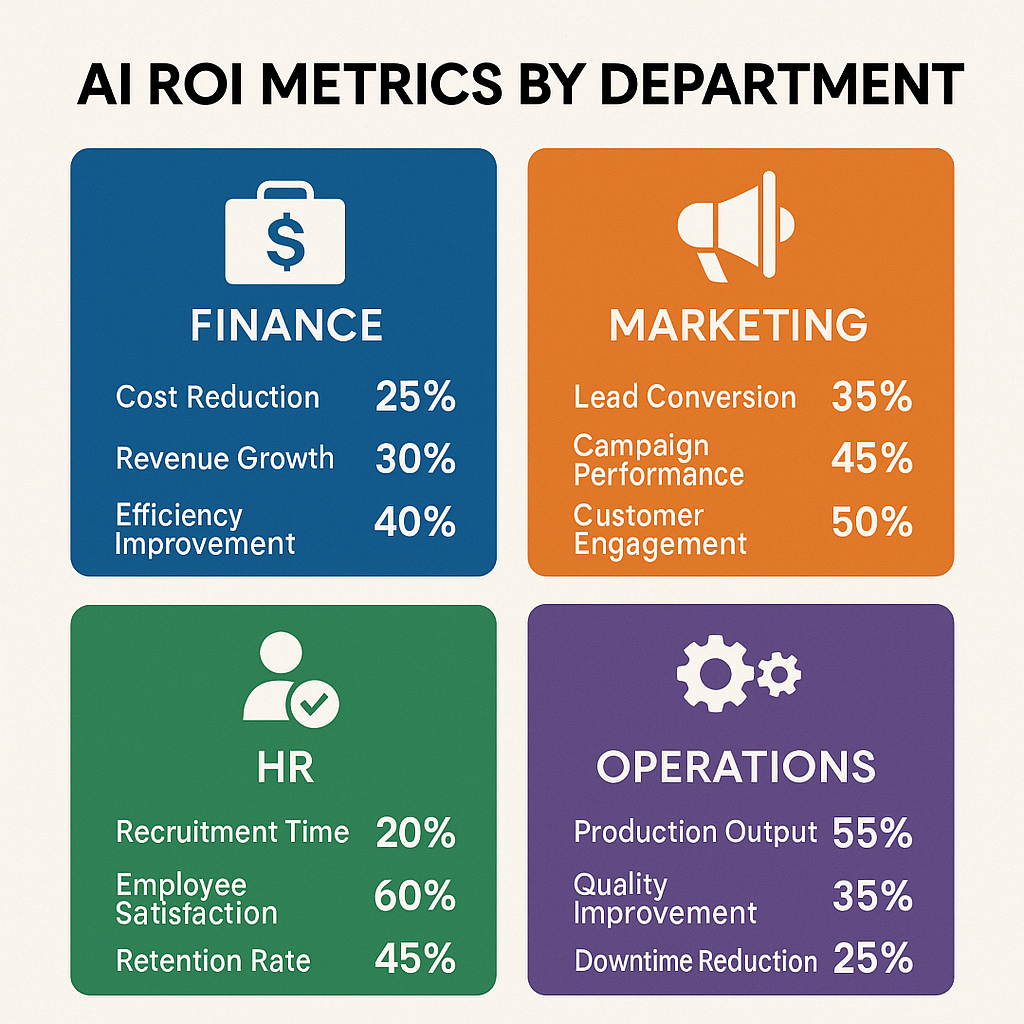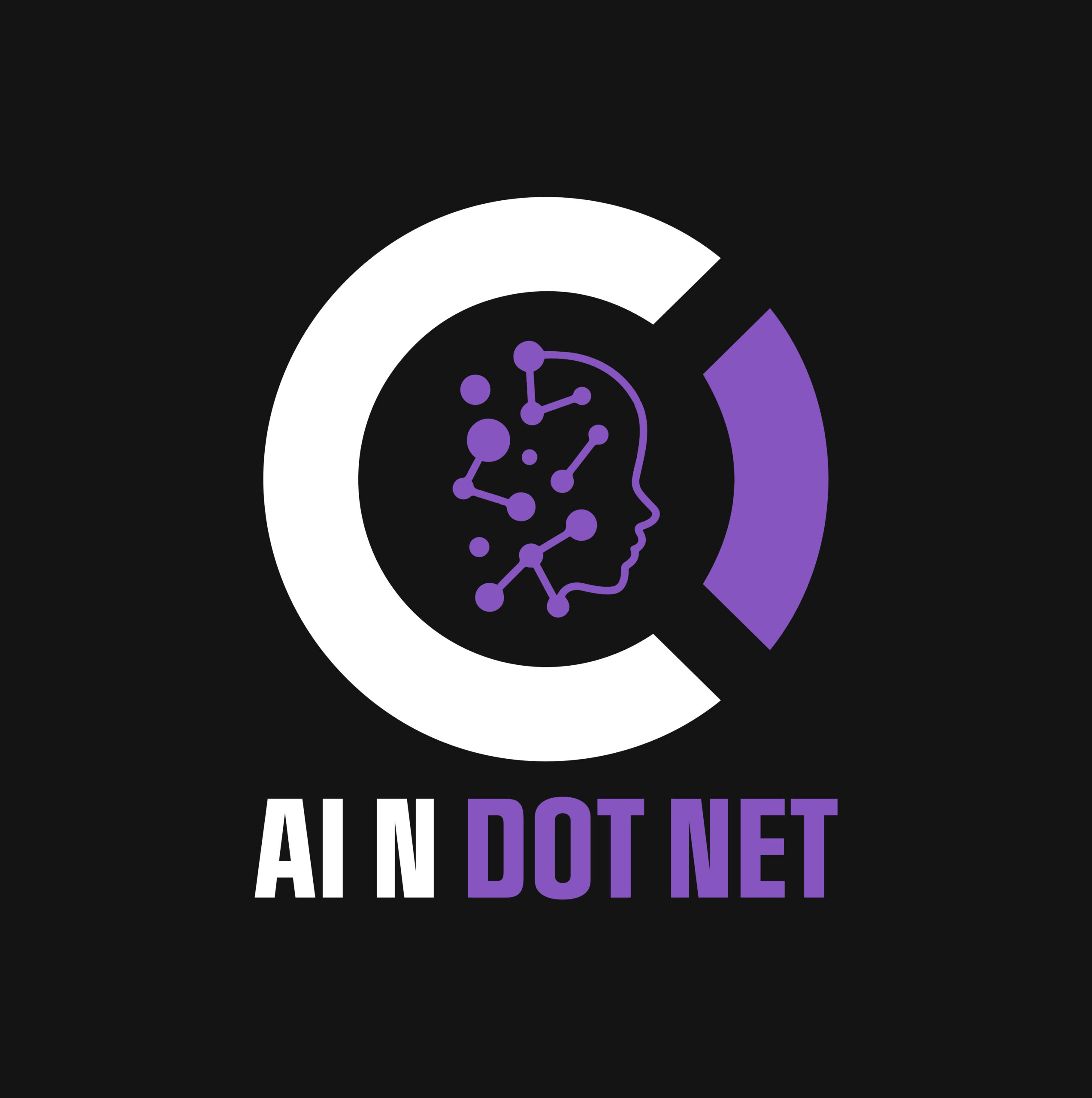Everyone wants AI to “deliver ROI”—but what does that actually look like?
This article breaks it down by department, showing how to define, track, and communicate ROI for AI projects across your organization. Whether you’re using Power Platform, ML.NET, or Azure AI, these examples will help you speak the language of value.
💼 Why Departmental ROI Matters

A chatbot in HR won’t be measured the same way as a forecasting engine in Finance. If you’re using one-size-fits-all metrics, you’re setting yourself up for confusion—or worse, false success.
ROI is role- and goal-specific. It has to match the department’s real pain points.
🧩 ROI Metric Examples by Department
| Department | Sample AI Use Case | How to Measure ROI |
|---|---|---|
| HR | Resume screening automation | Time-to-hire, recruiter hours saved, candidate quality score |
| Finance | Forecasting or anomaly detection | Forecast accuracy %, fraud cases flagged, manual reviews reduced |
| IT / Support | Ticket triage chatbot | Average resolution time, deflection rate, FTE savings |
| Sales | Lead scoring or assistant | Conversion lift, deal size delta, sales rep time reallocated |
| Marketing | Campaign optimization | Engagement rate, CPA reduction, segmentation accuracy |
| Operations | Inventory or route optimization | Cost per unit handled, delivery time variance, waste reduction |
| Legal / Compliance | Document classification | Review time per doc, risk events caught, consistency score |
📊 Visual Example: Before & After AI
| Metric | Before AI | After AI | ROI Delta |
| Avg. Resolution Time (IT) | 3.2 days | 1.4 days | 56% faster |
| Forecast Accuracy (Finance) | 72% | 88% | +16 pts |
| Cost per Lead (Marketing) | $210 | $138 | -34% |
| Time to Hire (HR) | 28 days | 18 days | -10 days |
These aren’t just KPIs—they’re proof points for executives, board members, and budget owners.
🧠 Pro Tip: Tie ROI to Business Objectives

Your AI ROI story should align with broader business goals like:
- Increasing revenue without increasing headcount
- Reducing operational variance
- Decreasing regulatory exposure
- Speeding decision-making across silos
If your AI project helps a department achieve those goals measurably—that’s ROI.
🧮 A Simple ROI Formula for Departmental AI
ROI = (Value Gained – Cost of AI Project) / Cost of AI Project
Where “Value Gained” could be:
- Hours saved × hourly rate
- % error reduction × business risk value
- Increased throughput × unit margin
Make sure to:
- Quantify both hard and soft ROI (like morale or speed)
- Estimate conservatively
- Track results over time—not just at deployment
👥 Role-Based Advice
| Department | AI Project | Goal | Metric | ROI Status |
| HR | Resume filtering | Reduce time-to-hire | Days to fill | ✅ ROI Achieved |
| IT | Ticket bot | Deflect low-level issues | Tickets auto-resolved | 🟡 In Progress |
| Ops | Route optimizer | Reduce costs | Miles per delivery | 🔴 Needs Revision |
Use this to communicate across teams and executive layers. Visual status beats a 10-slide deck every time.
🧠 Final Thought
If you can’t measure it, you can’t prove it.
AI doesn’t need to be perfect to deliver ROI—it just needs to move the right metric in the right department.
Build AI with value in mind—and make sure everyone knows where to look for it.
Want to stay ahead in applied AI?
📑 Access Free AI Resources:
- Download our free AI whitepapers to explore cutting-edge AI applications in business.
- Check out our free AI infographics for quick, digestible AI insights.
- Explore our books on AI and .NET to dive deeper into AI-driven development.
- Stay informed by signing up for our free weekly newsletter

